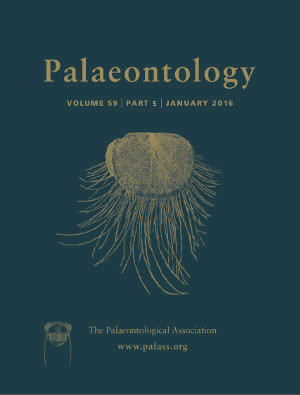Reg. Charity No. 1168330

Euryhaline adaptations in Pennsylvanian vertebrates allowed them to inhabit the marine to freshwater spectrum. This is illustrated by new assemblages of fish and tetrapods from the early Moscovian Minto Formation of New Brunswick, Canada. Fish include chondrichthyans (xenacanthids and the enigmatic Ageleodus), acanthodians (gyracanthids and acanthodiforms), sarcopterygians (rhizodontids, megalichthyids and dipnoans), and actinopterygians (eurynotiforms). Tetrapods include small‐ to medium‐sized, and largely aquatic, stem tetrapods (colosteids) and anthracosaurs (embolomeres). A key finding is that the parautochthonous fossil assemblages are preserved across a salinity gradient, with diversity (measured by the Simpson Index) declining from open marine environments, through brackish embayments, and reaching a nadir in tidal estuaries. Chondrichthyans dominate the entire salinity spectrum (65% of fossils), a distribution that demonstrates a euryhaline mode of life, and one large predatory chondrichthyan, Orthacanthus, may have practised filial cannibalism in coastal nurseries because its heteropolar coprolites contain juvenile xenacanthid teeth. In contrast, other fish communities were more common in open marine settings while tetrapods were more common in coastal brackish waters. While all these faunas were also likely to have been euryhaline, their osmoregulation was, perhaps, less versatile. The demonstration of widespread euryhalinity among fish and aquatic tetrapods explains why Pennsylvanian faunas generally show a cosmopolitan biogeography because taxa were able to disperse via seaways. It also resolves the paradox of enriched strontium isotopic signatures observed in these faunas because organisms would have been, at times, exposed to continental water bodies as well. Therefore, our new findings contribute to the long‐running debate about the ecology of Pennsylvanian fishes and tetrapods.